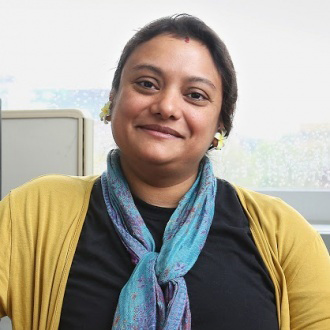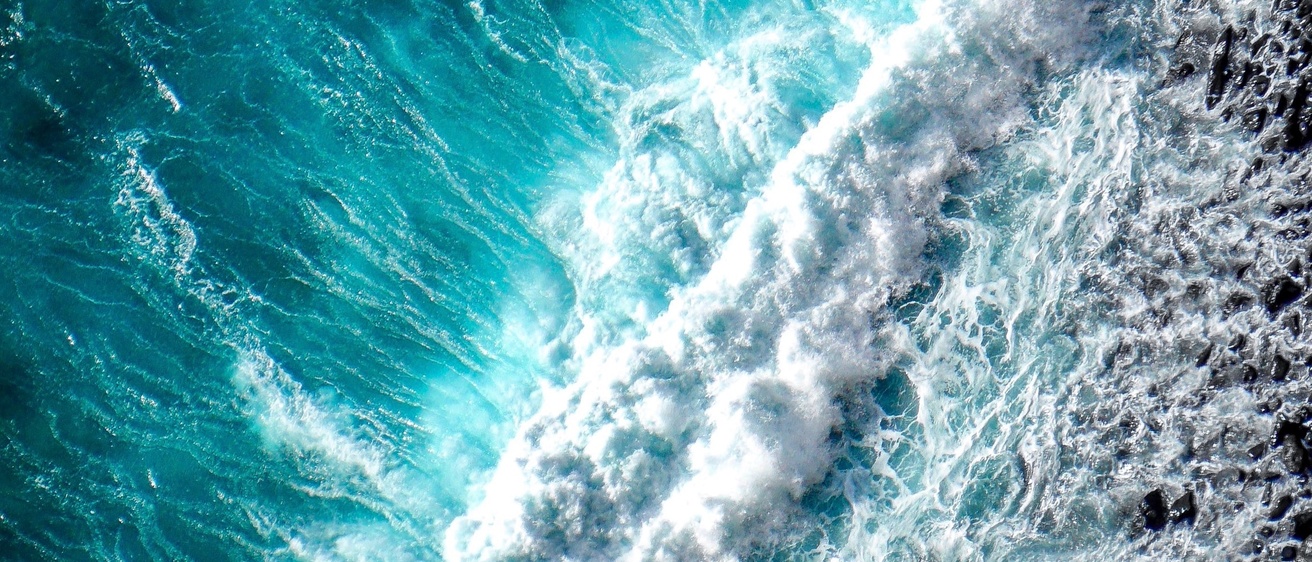
People: Ananya Sen Gupta, assistant professor of computer and electrical engineering
Research page: Ananya Sen Gupta Research Group
Mission area: Environment and Energy, Systems and Sensors
Signal processing and machine learning algorithms being developed at the University of Iowa Technology Institute (ITI) could offer solutions to real-time marine sensing using underwater acoustics.
Underwater acoustic propagation is of high naval interest due to the ability of sound to propagate under water with significantly lower absorption rates than electromagnetic waves such as used in radio-frequency (RF) or optical wireless communications.
The U.S. Department of Defense Office of Naval Research recently announced it awarded Ananya Sen Gupta, an ITI faculty affiliate and assistant professor of computer and electrical engineering, a grant titled “Adapting Underwater Acoustic Communication Networks to Changing Oceanic Conditions Using Opportunistic Signaling Schemes and Morphological Signal Processing.”
The award obligates $49,581 and an additional $199,908 in future funding totaling $249,489 through June 2023.
Sen Gupta’s study focuses on interference from real-time changes in the ocean environment, particularly under moderate-to-rough sea conditions in shallow waters.
A key question for the research is, “How do we adapt large-scale autonomous wireless sensor networks operating in the shallow water acoustic paradigm to the unpredictable oceanic scattering events that deeply impact node-to-node communications at both the physical and network layers?”
Communicating robustly using acoustic signals in the shallow water paradigm has been a fundamental challenge to marine sensing and naval communications, particularly in battlespace scenarios where real-time accurate sensing and prediction of the shallow water acoustic channel is of paramount importance.
This is due to the highly dynamic nature of the oceanic environment, leading to unpredictable scattering of the transmitted acoustic signal due to reflections from the moving ocean surface and the sea floor. Such unpredictable variability in the shallow water acoustic channel is further compounded by Doppler effects introduced by fluid motion.

Sen Gupta is working to close these knowledge gaps in marine sensing for autonomous underwater acoustic networks. Sen Gupta is an expert in signal processing and pattern recognition and plans to opportunistically leverage real-time physical knowledge of oceanic multipath to enable high-performance wireless sensor networks that use shallow water acoustics as the communications medium.
“Much of my work is to bridge the knowledge gap between the physical processes of acoustic propagation in the ocean and computational techniques such as signal processing and machine learning algorithms that seek to understand the ocean state in real time,” Sen Gupta said. “Closing this gap is key to interpreting what the algorithms might detect or learn as well as teaching the algorithm how to prioritize its detection and learning goals.”
Sen Gupta, who has been at UI since 2013, joined ITI last year in part because of its relationships with the Department of Defense. Her research interests include signal processing, machine learning, and knowledge discovery applied to studying time-varying processes in ocean and space environments.
